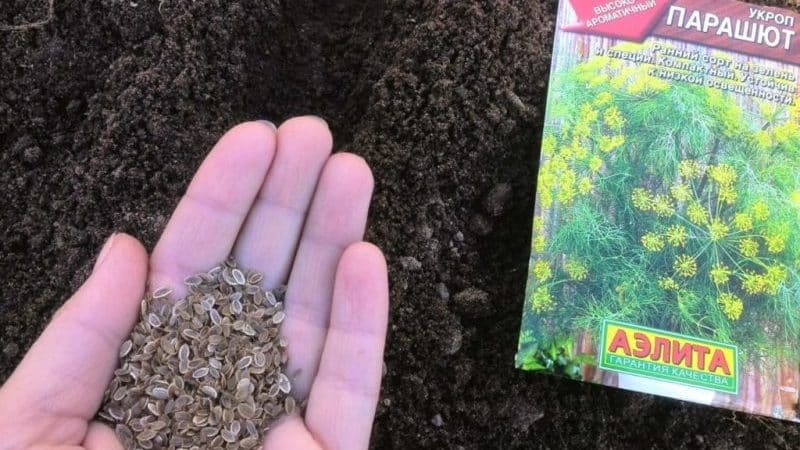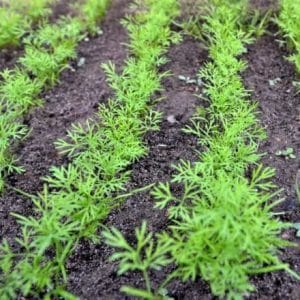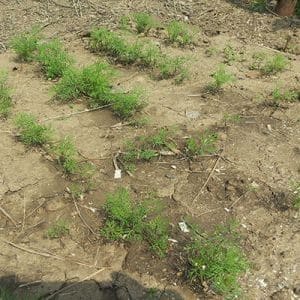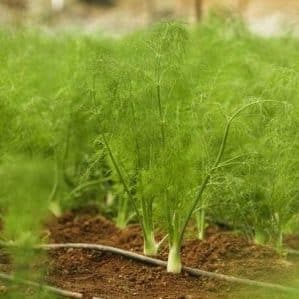When is it better to plant dill before winter, and is it possible to do so?
Is it possible to plant dill before winter and when to do it? Experienced gardeners claim that in this case dill sprouts faster, grows better and produces a good harvest. Is it so? If you look at it, the famous spice belongs to the cold-resistant, long-day crops.
With proper sowing, dill seeds will calmly survive the winter, withstand March frosts without consequences and sprout vigorously in early spring, 10-15 days earlier than spring sowings.
What varieties of dill can be sown in autumn?
Garden dill comes in three types:
- Ordinary. The plant has a single stem with numerous leaves. Forms at the top umbrella with seeds.
- Bush. At the base of the main stem, 5-6 internodes are formed, from which lateral stems develop.
- Densely leafy. The plant has one stem, but due to the large number of leaves, this dill resembles a small Christmas tree.
In these three categories, breeders have developed a great variety of varieties and hybrids with different ripening periods and distinctive characteristics. Before winter, dill of any variety is planted, but to achieve the best results you should give preference to varieties with increased frost resistance, early and medium ripening periods:
- Kharkovsky 85;
- Atlant;
- Ambrosia:
- Shmaragd;
- Umbrella;
- Gribovsky:
- Vologda lace;
- Grenadier.
Fresh greens from the listed varieties are harvested 30-45 days after germination.

How to choose the time for autumn planting before winter and when to prepare the beds
The timing of autumn sowing of dill depends on the climate of the region and weather conditions of the current period. If the autumn is too warm and the seeds are sown early, the seeds may germinate. The optimal sowing time is considered to be days when the daytime air temperature is within 0-3°C:
- in the Moscow region: in November;
- in Siberia and the Urals: in mid-late October;
- in the south: in the second half of November – early December.
If for spring sowing the beds and the soil on them are prepared in the fall, then for winter dill the planting site is prepared in the summer, in the middle of July - early August.
Advantages and disadvantages of autumn planting
Planting dill in the fall before winter has many advantages:

- seeds will sprout 10-15 days earlier than spring sowings;
- there is no risk of seeds freezing;
- strong and friendly shoots;
- plants will have stable immunity to diseases and adverse factors;
- saving time on other work in the spring;
- the opportunity to collect several harvests of greenery per season.
No significant disadvantages of the method were identified. There are certain risks that many gardeners consider disadvantages:
- in unstable weather (sudden thaw in autumn) and inaccurate forecasts, there is a risk of untimely seed germination;
- increased seed consumption (20-30% more);
- the probability of seedling death in the spring due to recurrent frosts.
How to plant dill in the fall before winter
Winter sowing is somewhat different from traditional spring sowing. Knowing the secrets and intricacies of autumn planting, you can avoid many problems, because of which summer residents often refuse to do so. growing method.
Selecting a location
Dill prefers places well lit by the sun throughout the day (minimum duration of bright light - 12 hours), and soil rich in organic matter, light and neutral in acidity. It is difficult to grow lush emerald greens in acidic and poor soil. Such lands are cultivated in advance.
When choosing a place for dill, it is important to observe crop rotation. The best predecessors for it are cucumbers, early potatoes, tomatoes, radishes, white cabbage and cauliflower. You can’t sow dill after plants of its own Apiaceae family: cilantro, carrots, cumin and fennel.
Important! A bed brightly lit by the sun for a long time is required for winter dill. The snow will melt there faster than other places, the soil will warm up and seedlings will appear.
Seed preparation
The seeds are sown dry before winter. No pre-treatment, soaking or other pre-sowing procedures are needed. The seeds must be fresh: if they are collected from your own garden, then definitely this year.
Preparing the bed
Before you start preparing the soil for a crop, it is important to know exactly which soil, in terms of nutritional value and mechanical composition, predominates in the garden. To determine this in the field, there is such a test. Take a handful of earth and squeeze it into a fist.
If a soil lump easily falls apart into grains when you press on it, you have sandy loam soil. Soil with a high clay content is slippery and greasy to the touch. You can easily roll it into a sausage.
The acidity of the soil is indicated by weeds growing on it. Indicators of very acidic soils are:
- field navel (one of the wild types of chamomile);
- blueberry;
- heather;
- sorrel;
- horsetail.
Having determined the type of soil and its acidity, two weeks before sowing, begin the following activities:
- The soil is dug up using a shovel and the weed rhizomes are removed.
- At the same time, it is limed (2-3 kg of lime for every 10 sq. m) and a complex of fertilizers is added (rotted manure, sifted wood ash, superphosphate and potassium chloride) - 20-30 g per 1 sq. m. m.
- Use a rake to level the soil well, breaking up all lumps.
Attention! Manure or compost applied to the soil must be completely rotted, otherwise the weeds will kill the seedlings.
Sowing pattern and depth

Dry seeds are sown in the soil according to the following scheme:
- embedment depth - 3 cm;
- distance between rows - 10-15 cm;
- the distance between plants is 0.51 cm.
Other rules
Such a large depth of seed placement is not accidental. It is advisable that 1.5 cm be fertile soil, and the other 1.5 cm be a warm mulching layer. Peat, dry manure crumbs, and sawdust from deciduous trees are used as mulch for dill. Mulch not only retains heat and protects from frost, but also prevents the formation of soil crust after the snow melts.
Have you prepared a bed, but didn’t have time to sow—it snowed? No problem! You can also sow in December, during the first thaw. Lightly scatter 2-3 cm of snow, sow the seeds directly on the snow cover and cover with a layer of snow.
How to care for dill planted in the fall before winter
Unpretentious dill does not require extensive care. For a bountiful harvest, the seeds need to be properly wintered so that they do not rot or freeze. The choice of mulching and covering material depends on the winter temperatures of the region and the level of groundwater in the area.
The best material suitable for covering crops in any region is considered to be agrofibre, and peat mulch on top of it.
In the spring, when seedlings appear, crop care includes the following mandatory agricultural practices:
- Regular watering. It is important not to allow the top layer of soil to dry out. The frequency of watering is 1 time a day, on hot days - 2-3 times.

- Root feeding. Organic matter such as bird droppings or manure is used as fertilizer. For lush greenery, 1-2 feedings are enough for the entire growing season of the plant.
- Weeding of weeds. Weeds are the worst enemies of any green crop. Capable of active growth, they deprive cultivated plants of the necessary space in the sun and nutrients from the soil.
- Shelter on hot days from direct sunlight. Young dill shoots are very tender. If the weather is abnormally hot in the spring, canopies made of gauze or thin white lutrasil are built over the beds.
- Protection against pests is possible only with the help of traditional methods of control. To repel harmful insects, sprinkle the greens with tobacco dust or dry garlic powder mixed with sand in a 1:1 ratio.
Harvest and storage

Depending on the variety chosen, it takes from 25 to 50 days to grow fresh winter greens. Cutting dill begins at a height of 7 cm. If you grow greens for sale, wait until the height is 20-25 cm. The entire crop is harvested at once or as needed.
The collected greens are used for food and stored briefly in the refrigerator. For long-term storage, dill is dried or frozen. For freezing, the greens are washed to remove dirt and finely chopped. It is convenient to freeze the spice in ice containers to add portioned cubes to various dishes.
Conclusion
Winter crops are often used by gardeners who grow greens for sale. Despite numerous risks and additional costs (for covering material, mulch, seeds of special varieties), you can get an early harvest of greenery, which is in high demand. For summer residents who grow dill for the family table, the uninterrupted cultivation of this unpretentious green in open ground during the off-season period is also attractive.